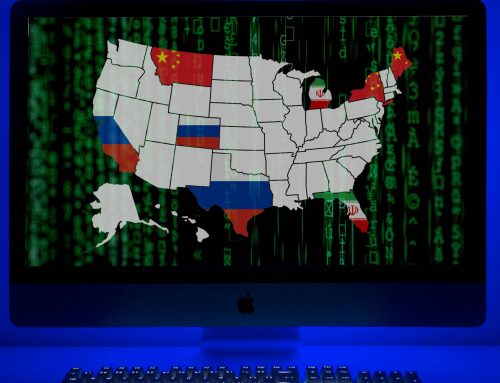ASD Elections Integrity Fellow David Levine and the Open Source Election Technology Institute’s Global Director of Technology Development and Open Standards Edward Perez lay out ways to bolster election integrity by strengthening the security of electronic pollbooks.
Introduction
Democracies around the globe are currently struggling to respond to multiple challenges that pose threats to public confidence in the legitimacy of election outcomes. Recent research and reporting have illustrated efforts to undermine democratic processes in Australia,1 North and South America, Europe, Africa, and Asia.2 These threats include cybersecurity operations3 as well as disinformation campaigns.4 More specifically, election interference typically takes one of two forms. The first is influence campaigns designed to affect “hearts and minds.”5 This includes overt and covert efforts to manipulate voter preferences and turnout through the dissemination of information.6 The second form targets election infrastructure. This form targets the technical aspects of the election, such as voter registration, the casting and counting of ballots, and the reporting of results, and can have a more direct impact on the electoral outcome.7 Both types of activities are also sometimes done in conjunction with one another to undermine confidence in the integrity of an election more broadly.8
In the election-security context, much attention has been paid to voting systems, because they capture and count the voters’ ballot choices that ultimately generate the results. Like any technology, voting systems have vulnerabilities, and these vulnerabilities have been documented extensively.9 In contrast, much less attention has been paid to electronic pollbooks (e-pollbooks), which are used to validate the eligibility of voters at polling locations and document the issuance of ballots (sometimes referred to as “posting” voters). While e-pollbooks do not record voter choices or tabulate election results, they are vulnerable to cybersecurity and disinformation attacks that can disrupt the voting process and/or undermine public confidence in the election, more generally. Furthermore, unlike voting technology, which is typically physically isolated and not connected to other networked infrastructure, e-pollbooks are often connected to cloud-based networks, which provide additional avenues for compromises and malfeasance. Even without changing votes, an attacker who interferes with electronic pollbooks could undermine confidence in an election in a variety of ways.
Furthermore, fewer uniform standards exist for the use of e-pollbooks in comparison to voting systems. For example, in the United States, although there is a federal testing and certification program for voting systems based on voluntary national guidelines,10 no such program currently exists for the testing and certification of e-pollbooks. This paper examines e-pollbook risks and explores ways to prevent, detect, and recover from e-pollbook attacks that could otherwise potentially undermine public confidence in the legitimacy of election outcomes.
- Section II provides a more detailed introduction to electronic pollbooks and how they function;
- Section III outlines the security risks associated with their use;
- Section IV addresses technical measures to mitigate security risks;
- Section V addresses operational practices to mitigate security risks; and
- Section VI addresses best practices for training and polling place operations.
Please click the link to the right to read the rest of the report.
- Paul Karp, “Russian Twitter Trolls stoking anti-Islamic sentiment in Australia, experts warn,” The Guardian (online, 20 November 2018), https://www.theguardian.com/australia-news/2018/nov/20/russian-twitter-trolls-stoking-anti-islamic-sentiment-in-australia-experts-warn
- Qi Cheng et. al, “Hacking Democracy: Cybersecurity and Global Election Interference,” Henry M. Jackson School of International Studies, University of Washington, Seattle (2018) https://jsis.washington.edu/news/hacking-democracy/
- von der Staak and Wolf, “Cybersecurity in Elections,” Institute for Democracy and Electoral Assistance (2019), https://www.idea.int/sites/default/files/publications/cybersecurity-in-elections-models-of-interagency-collaboration.pdf
- Bandeira, et. al., “Disinformation in Democracies: Strengthening Digital Resilience in Latin America,” The Atlantic Council (2019), https://www.atlanticcouncil.org/wp-content/uploads/2019/09/Disinformation-in-Democracies.pdf
- “Prepare for the Worst and Fight for the Best: A Citizen’s Guide to 2020 Electoral Interference,” Just Security (2020), https://www.justsecurity.org/72491/prepare-for-the-worst-and-fight-for-the-best-a-citizens-guide-to-2020-electoral-interference/
- Dawood, “Combatting Foreign Election Interference: Canada’s Electoral Ecosystem Approach to Disinformation and Cyber Threats,” Election Law Journal, Vol. 20. No. 1 (2021), https://www.liebertpub.com/doi/pdf/10.1089/elj.2020.0652
- “Prepare for the Worst and Fight for the Best: A Citizen’s Guide to 2020 Electoral Interference,” Just Security (2020), https://www.justsecurity.org/72491/prepare-for-the-worst-and-fight-for-the-best-a-citizens-guide-to-2020-electoral-interference/. See also National Intelligence Council, Intelligence Community Assessment, “Foreign Threats to the 2020 US Federal Elections” (2021), https://www.dni.gov/files/ODNI/documents/assessments/ICA-declass-16MAR21.pdf
- Dawood, “Combatting Foreign Election Interference: Canada’s Electoral Ecosystem Approach to Disinformation and Cyber Threats,” Election Law Journal, Vol. 20. No. 1 (2021), https://www.liebertpub.com/doi/pdf/10.1089/elj.2020.0652
- “Securing The Vote,” The National Academies of Sciences, Engineering, and Medicine (2018), https://www.nationalacademies.org/news/2018/09/securing-the-vote-new-report
- U.S. Election Assistance Commission, “Voluntary Voting System Guidelines,” https://www.eac.gov/voting-equipment/voluntary-voting-system-guidelines





